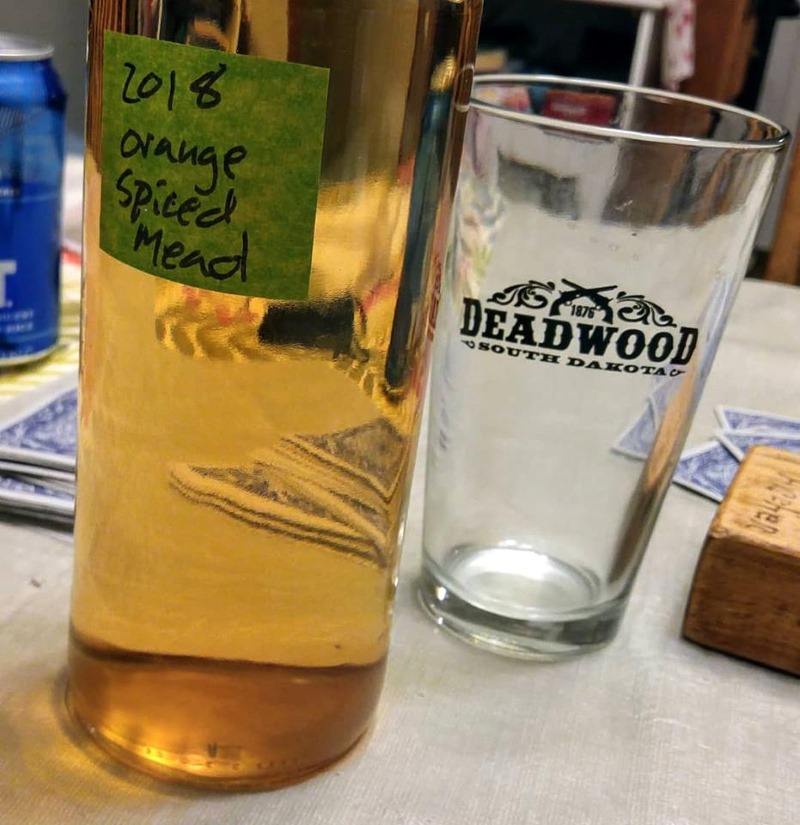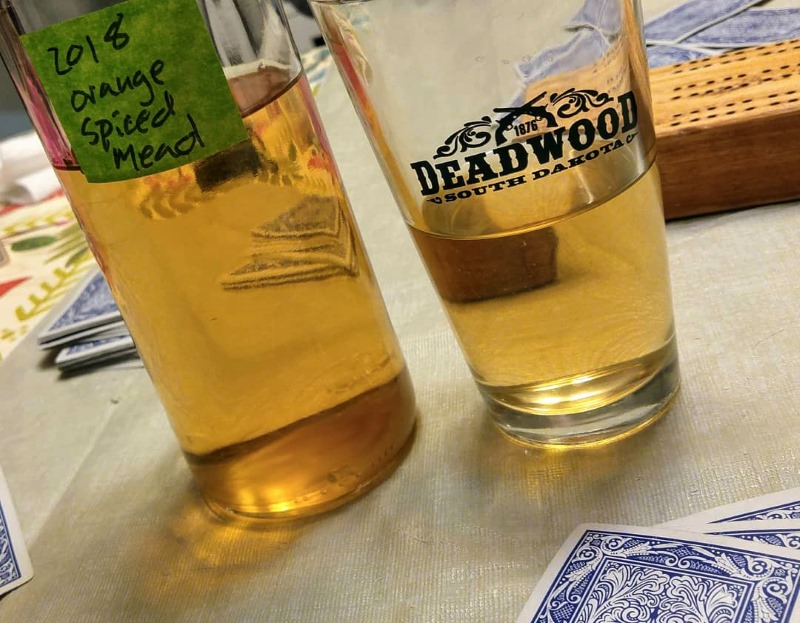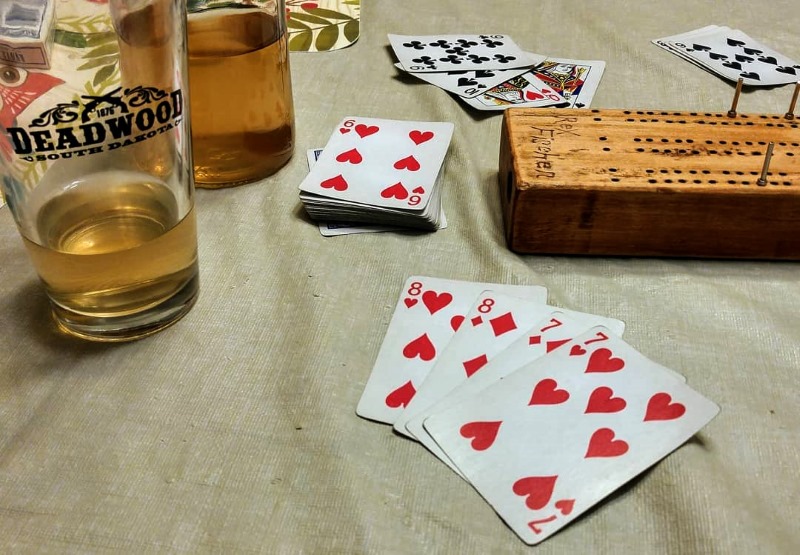Since my last post in April of 2018, I had been keeping my mead safe in a dark corner, intending to check on it again around Christmastime. Unfortunately, I forgot about it even then, and didn't remember it until mid-February!

In any case, we cracked one open. In the bottle, it looked really good:
I poured a little into my glass, and was immediately impressed with the blend of orange and spice that wafted up from inside; it seemed to me to be a really nice combination; not too much of anything, and just enough of everything:
When I tasted it, my impressions were the same - it was great! A very nice, well-balanced combination that didn't seem too "hot," too "sweet," too "spicy" or too "orange-y." I honestly couldn't think of a thing wrong with it, and was very happy with it, and hope that I can make it as well, next time.
The mead made for nice sipping while I was playing cribbage with my dad, and may have even brought me some good luck:
As has been said many times,
trust the recipe. It may break a lot of "proper" rules, but for this application, every step is there for a reason, and contributes to a marvelous end.
Give it a shot - you will not be disappointed!
Ron





